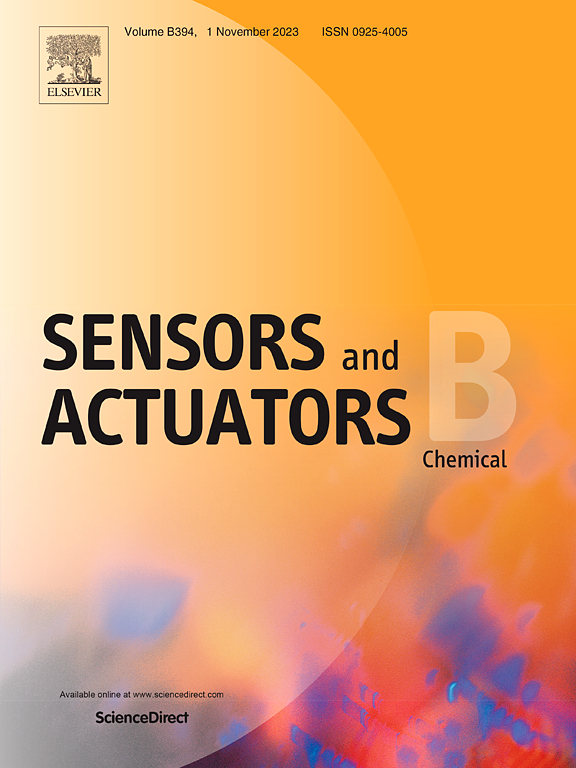通过非化学计量工程在TiO/R-TiO2中引入氧空位用于耐氯敏感COD电化学检测
IF 8
1区 化学
Q1 CHEMISTRY, ANALYTICAL
引用次数: 0
摘要
由于水中氯离子丰度高且电极电导率不足,快速准确的电化学检测水中COD面临诸多挑战。本文采用非化学计量工程的方法,通过引入氧空位,创新性地构建了TiO/R-TiO 2复合材料。TiO/R-TiO 2复合材料具有丰富的氧空位和由此产生的超低价钛种,可以通过水的电化学氧化产生大量羟基自由基,并表现出快速的电子转移速率。引入的氧空位改变了表面电荷分布,使材料具有优异的导电性和抗氯离子干扰的能力。以葡萄糖为标准品评价材料的电化学响应,其COD检出限为0.07 mg L-1,检出范围为1 ~ 500 mg L-1。选取海水作为实际水样进行检测,结果与标准高锰酸钾法具有较好的一致性,从而验证了所构建的电化学传感方法对含0.5 M (17725 mg L-1)氯离子的水中具有直接、灵敏的检测能力。通过解决氯离子干扰问题,我们的工作有助于开发强大的电化学COD检测方法,可广泛应用于各种水环境,确保水资源的保护和水生生态系统的可持续性。本文章由计算机程序翻译,如有差异,请以英文原文为准。

Introducing oxygen vacancy in TiO/R-TiO2 via non-stoichiometric engineering for chloride-resistant sensitive COD electrochemical detection
The rapid and accurate electrochemical detection of COD in water faces numerous challenges due to the abundance of chloride ions at high levels and insufficient conductivity of the electrodes. In this work, the TiO/R-TiO₂ composite material was innovatively constructed by introducing oxygen vacancies through non-stoichiometric engineering. The TiO/R-TiO₂ composite material possesses abundant oxygen vacancies and the resultant ultralow-valent titanium species, which can generate a large number of hydroxyl radicals via electrochemical oxidation of water and exhibit a rapid electron transfer rate. The introduced oxygen vacancies alter the surface charge distribution, endowing the material with excellent conductivity and resistance to chloride ion interference. Glucose was employed as a standard substance to evaluate the electrochemical response of the material, which exhibited a COD detection limit of 0.07 mg L−1 and a broad detection range of 1–500 mg L−1. Seawater was selected as actual water samples for detection, and the results demonstrated good consistency with the standard potassium permanganate method, thereby validating the constructed electrochemical sensing method's capability for direct and sensitive detection of water containing 0.5 M (17725 mg L−1) chloride ions. By addressing the chloride ion interference problem, our work contributed to the development of robust electrochemical COD detection methods that can be widely applied in various water environments, ensuring the protection of water resources and the sustainability of aquatic ecosystems.
求助全文
通过发布文献求助,成功后即可免费获取论文全文。
去求助
来源期刊

Sensors and Actuators B: Chemical
工程技术-电化学
CiteScore
14.60
自引率
11.90%
发文量
1776
审稿时长
3.2 months
期刊介绍:
Sensors & Actuators, B: Chemical is an international journal focused on the research and development of chemical transducers. It covers chemical sensors and biosensors, chemical actuators, and analytical microsystems. The journal is interdisciplinary, aiming to publish original works showcasing substantial advancements beyond the current state of the art in these fields, with practical applicability to solving meaningful analytical problems. Review articles are accepted by invitation from an Editor of the journal.
 求助内容:
求助内容: 应助结果提醒方式:
应助结果提醒方式:


